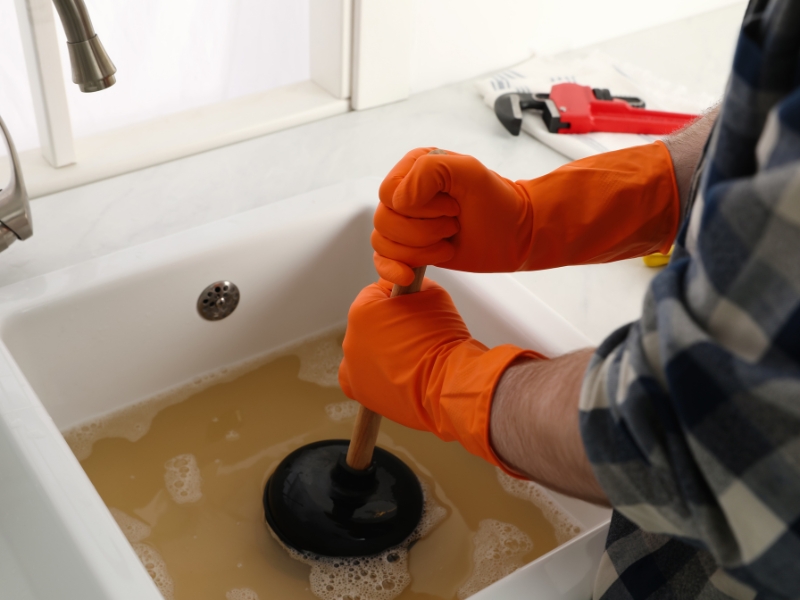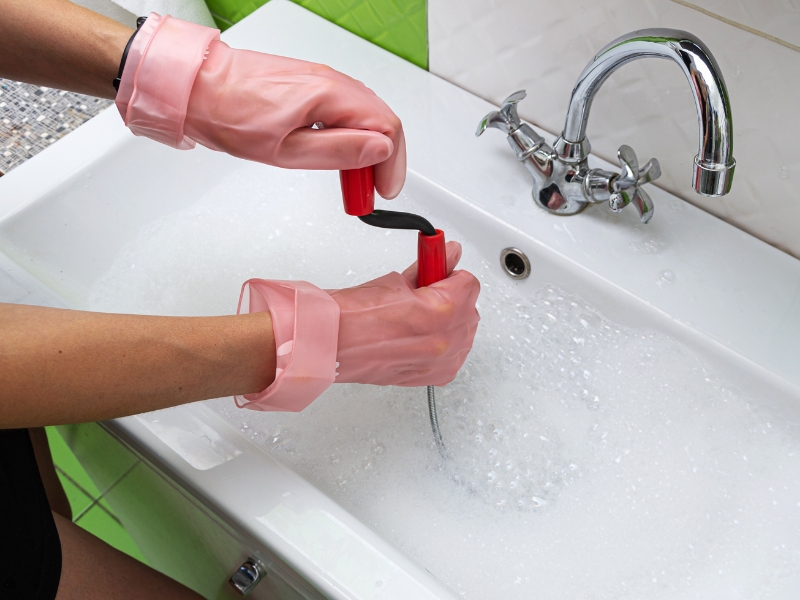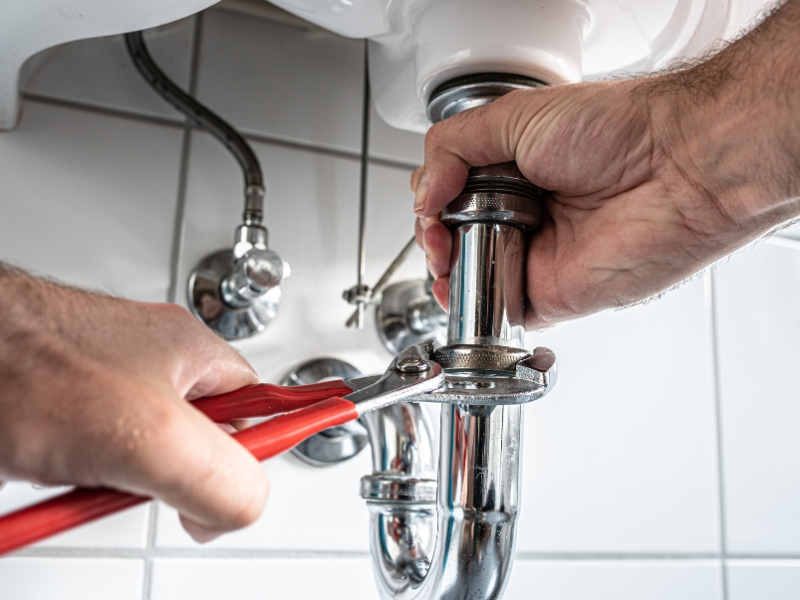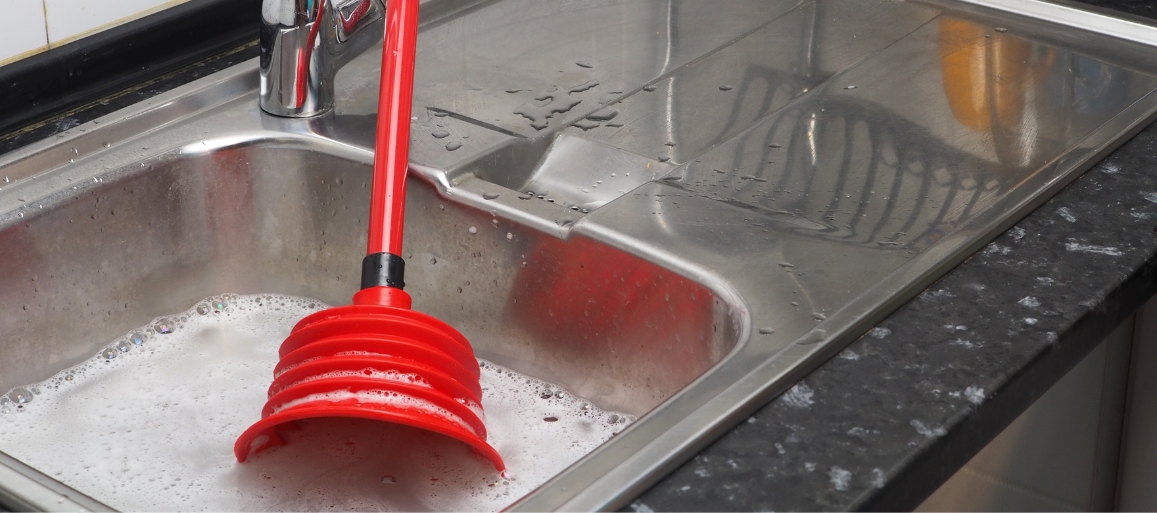A blocked sink can be one of those household annoyances that seem to come out of nowhere. One day, the water’s flowing away without a hitch, and the net, you’re left with a pool of suds that just won’t budge.
Whether it’s in the kitchen or bathroom, a clogged sink can cause a host of problems. The longer it’s left, the more troublesome it can become. Luckily, there are some straightforward ways to unblock a sink. With the right know-how, you can put off calling a plumber and hopefully sort out the problem yourself.
Why It’s Important to Unblock Your Sink
Water that doesn’t drain away properly can quickly lead to a few nasty issues. First, there’s the hygiene factor. Stagnant water can become a breeding ground for bacteria, creating foul smells and an unsanitary environment. If it’s in your kitchen sink, you might end up with food waste sitting around for longer than you’d like, too, which can attract pests.
A blocked sink also has the potential to cause damage. Prolonged blockages can lead to water backing up into places it shouldn’t, damaging seals or causing leaks. Over time, that extra pressure in the pipes can cause cracks or worse – so you could end up spending a fortune if you don’t unblock it soon enough.
Why Is Your Sink Blocked?
It depends on the sink – different sinks tend to face different culprits when it comes to blockages.
Kitchen Sinks
The most common offenders here are food scraps, grease, and fat. These can cling to the inside of the popes, gradually building up until the water can’t pass through.
Top Tip: It’s always a good idea to scrape your plates, pots, and pans thoroughly into the bin before washing up and to pour fat and grease into a container and dispose of it in the bin rather than down the drain.
Bathroom Sinks
If you’ve got a utility sink in your garage or laundry room, it might be blocked by lint, dirt, or other debris. Items like paint or cleaning products can also harden and clog the pipes.
Utility Sinks
Are your radiators not getting as warm as they should? Or is there uneven heating in different rooms in your home? This could be a sign of low water pressure in the system.
Tips to Unblock a Sink
1. Boiling Water
The easiest and most non-invasive method is simply to pour boiling water down the sink. This is particularly effective in dealing with fat, grease, and soap scum blockages. The heat helps to dissolve the gunk that’s stuck to the sides of the pipes. Here’s what to do:
- Fill your kettle to its maximum marked capacity.
- Slowly pour the water down the drain in stages, allowing it time to work its way through the blockage.
- Repeat if necessary.
This is a quick fix that works really well for minor blockages. However, if the blockage is more substantial, you might want a more robust way to unblock a sink.
2. Baking Soda and Vinegar
This classic household remedy works by creating a fizzing reaction that can help to break up debris. It’s especially effective in bathroom sinks where soap scum is more common. Make sure you’ve got a plug or stopper to hand before you start!
- Pour about 150g of baking soda down the drain.
- Follow it up with 250ml of distilled white vinegar.
- Immediately plug the sink with a plug or cloth to keep the reaction contained in the pipes.
- Leave for around 10-15 minutes.
- Flush the sink with boiling water.
Don’t be alarmed if you hear gurgling and spluttering – this is totally normal. If you notice some improvement, but the water still drains slowly, you can repeat the steps again.

3. The Plunger
If boiling water and vinegar haven’t done the trick, it’s time to bring out the plunger. This tool works by using suction to dislodge the blockage and get things flowing again, making it a pretty reliable way to unblock a sink.
- Make sure there’s enough water in the sink to cover the plunger’s rubber cup.
- Place the plunger over the drain, ensuring it forms a good seal.
- Push and pull the plunger quickly – keeping the seal intact.
- After about 30 seconds, lift the plunger and see if the water drains away.
If the blockage is stubborn, you might need to try a few rounds of plunging. You’ll know it’s worked when the water starts draining away freely.

4. Drain Snake
A drain snake (or plumber’s snake) is a flexible tool that’s designed to reach deep into the pipes and grab and pull out whatever’s causing the blockages. They’re especially good at clearing clogs further down the system.
- Insert the snake into the drain, turning the handle to work it through the pipe.
- When you feel resistance, twist the snake to hook onto the blockage.
- Pull the snake back out, bringing the blockage with it.
- Run water through the sink to check the blockage has gone.

5. Check the U-Bend
If none of these has done the trick, it might be time to investigate the U-bend. The U-bend is the curved section of pipe under a sink, which can collect debris over time. Luckily, accessing and cleaning it is pretty simple.
- Put a bucket under the U-bend to catch any water that might spill out.
- Unscrew the nuts holding the U-bend in place. You might need a spanner for this.
- Carefully remove the U-bend and check for any blockages inside.
- Clean it out thoroughly and reassemble the pipe.
- Run water through the sink to see if the blockage has cleared.
It’s worth keeping the bucket in place for the final stage as if you’ve not reattached the U-bend properly, it might leak.

Is Your Sink Still Blocked? Time to Call a Plumber.
Most sink blockages can be fixed using these methods, but there are still times when it’s best to call a professional. If you’ve tried everything and the water still isn’t draining, the blockage might be deeper in the system than you can reach.
At ECS, we’ll clear your drains quickly and with minimal disruption. With cutting-edge equipment and years of experience, we’re here to keep your drains up and running.
Call us today on 01420 571000 to find out more, or get in touch online.


